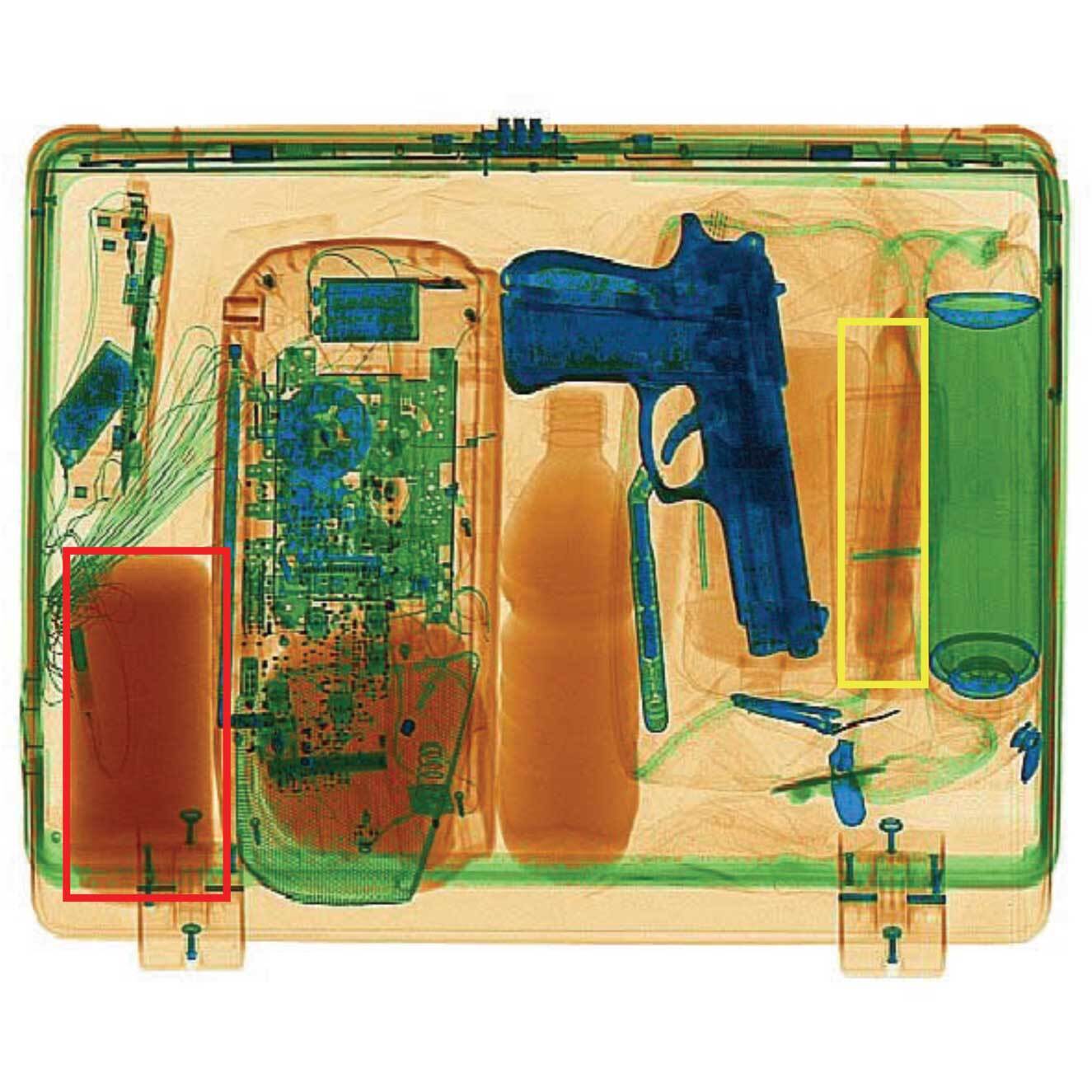Posted by Keith J - Tactical Solutions on 23rd Jun 2025
What Do the Colours on an X-ray Baggage Scanner Mean?
X‑ray baggage scanners are critical in airport security and other high‑security environments. Understanding the color-coded imaging they produce helps security teams rapidly identify potential threats in luggage, improving both safety and efficiency.
Orange = Organic Materials
Objects coloured orange on an X‑ray screen are organic (carbon‑based) items, think cotton, food, paper, leather, and some plastics. Their appearance stems from how X‑rays interact with lower‑density, carbon‑rich compounds, giving a distinct orange hue on-screen.
Why this matters: Security operators can quickly rule out everyday items (like clothing or snacks) and focus on anything out of the ordinary.
Blue = Inorganic Materials
Blue highlights inorganic materials. Metals, ceramics, glass, electronics, and other high‑atomic number items. These denser materials absorb more X‑rays, so they show up blue and often darker.
Why this matters: Since weapons and electronics often fall into this category, recognising blue objects can be critical for identifying concealed threats.
Green = Mixed Materials
Green indicates mixed-density items that combine organic and inorganic components, like batteries, electronic devices, composite tools, or packaged goods with foil and organic packaging.
Why this matters: Mixed items have complex internal structures and may warrant extra scrutiny to rule out hidden threats or disassembled components.

Material Thickness & Density: Additional Clues
Beyond colour, two other image attributes guide detection:
Brightness = Thickness
- Brighter areas = thinner materials (like thin papers or light fabrics)
- Darker areas = thick or dense items (like metal tools or dense devices)
Shading = Material Density
- Lighter shading = low-density items
- Darker shading = denser materials that absorb more X‑rays
Combining colour + brightness + shading enables a trained screener to understand a bag’s contents more quickly, accurately, and safely.
How X‑ray Scanners Work (Quick Technical Breakdown)
- X‑ray Penetration: A focused X‑ray beam passes through luggage.
- Radiation Detection: Detectors on the other side record how much radiation comes through.
- Image Processing: The system converts transmission data, mapping density and atomic number differences, to a colorised image.
This powerful yet subtle technology enables high-speed, non-invasive screening without opening bags—improving throughput and hygiene.
Why This Matters for Security & Efficiency
- Speedy Threat Detection – Colour cues help screeners spot dangerous items fast.
- Fewer False Alarms – Organic items (like clothes or snacks) are quickly recognised as non-threats.
- Lower Contact Risk – Less need to manually open bags, improving hygiene and security.
These scanners are essential across airports, mailrooms, courthouses, border checkpoints, and other high-security venues.
Tactical Solutions & X‑ray Screening
At Tactical Solutions Australia, we don’t just explain how things work, we empower security teams with the right hardware:
|
Product |
Best Option For |
|
Gilardoni Argo 536 |
Compact single-view scanner, ideal for space-constrained checkpoints |
|
Gilardoni Argo 640 DV |
Dual-view baggage scanner offering multi-angle imaging and deeper threat detection |
From aviation hubs to corporate mailrooms, we deliver world-class equipment backed by expert setup, training, and ongoing support.
Final Take
Understanding the orange-blue-green spectrum on your X‑ray scanner is more than a technical detail—it’s a frontline tool for rapid, accurate threat detection. At Tactical Solutions, we combine this expertise with industry-leading hardware like the Gilardoni Argo series to ensure you’re always a step ahead in security screening.
Want to improve your screening operations?
Contact our team today for demos, tailored quotes, and deployment support.

